Most NH, Maine basketball coaches favor adding a shot clock − but doing it won't be easy
The Portsmouth High School girls basketball team played a pre-season scrimmage at Newburyport High School in Massachusetts, and while basketball is basketball, there is an important difference in how the game is played in the two states.
Massachusetts uses a shot clock. New Hampshire does not.
"While it was different, there were only a couple of occasions early in the game where we lost track of the shot clock and had to rush," Portsmouth coach Tim Hopley said. "It certainly would take some time getting used to, but the benefits long-term for the growth of the players and the game would be a positive in my opinion."
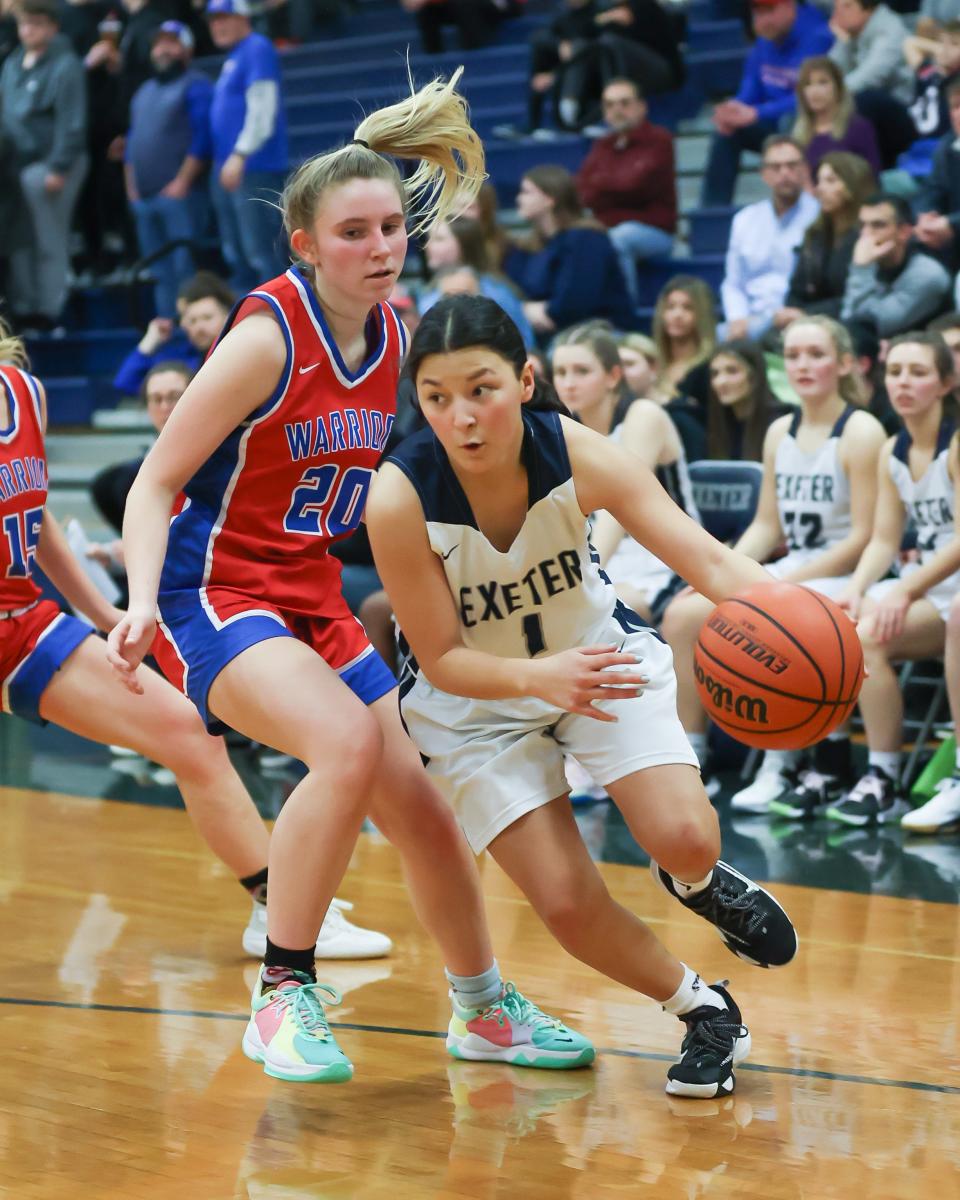
A shot clock mandates a team shoot the ball within a specific amount of time, usually 30 to 35 seconds in high school. Without a shot clock, a team with a lead late in the game can attempt to maintain possession and run the clock out, slowing down the pace of the game.
Even though the National Federation of State High School Associations (NFHS) approved a 30- to 35-second shot clock for high school basketball in May 2021, it wasn't a mandate. Individual states were given the choice.
The nine states that currently use a shot clock include New England states Massachusetts and Rhode Island, as well as Georgia, California, Maryland, New York, North Dakota, South Dakota and Washington.
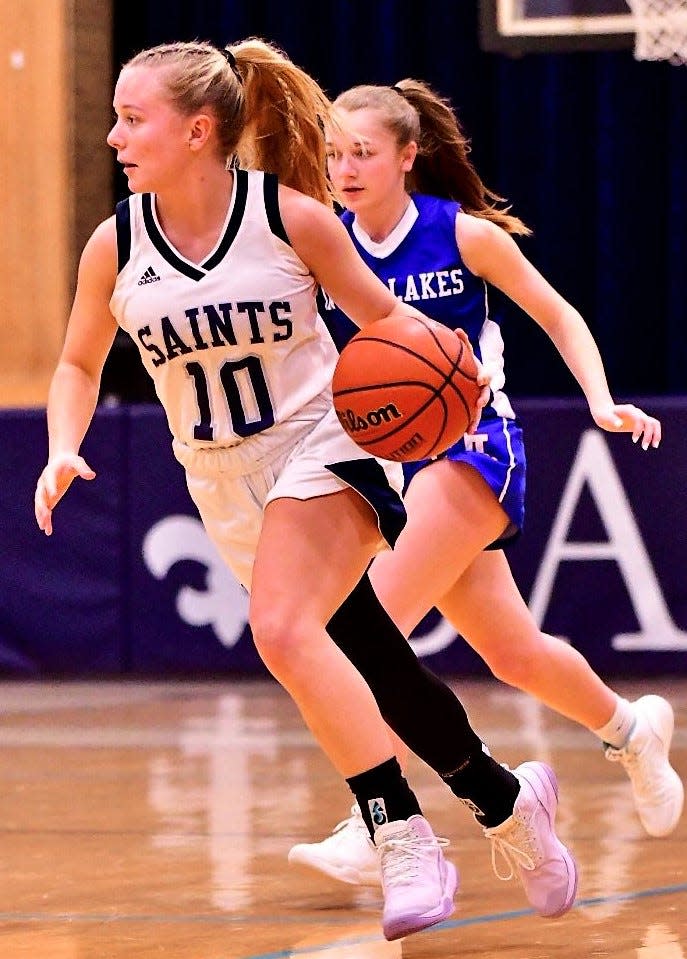
Since the approval by the NFHS nearly two years ago, Oregon, Utah, Illinois and Minnesota have voted to approve the use of the shot clock, while Florida voted last April to begin implementing "optional but recommended" use.
New Hampshire and Maine are two of the many states that have been hesitant to join the club.
The majority of Seacoast-region coaches and other stakeholders interviewed for this story are in favor of adding a shot clock to high school basketball, suggesting the pros outweigh the cons.
Preparing players for the next level
Winnacunnet girls coach Andrew Marden said he is a big shot clock supporter, but he understands the challenges, citing concerns such as getting qualified operators.
"I am a believer that not having a shot clock does impact the level of basketball in our states," said Marden, who grew up in Maine. "I have coached in New Hampshire now for four years, so I have seen (not having a shot clock) in both states. It makes it challenging to prepare our top players who have ambitions to play at the next level."
There is a 35-second shot clock in college basketball.
More high school basketball:Meet 11 surprise standout girls players in Seacoast in 2022-23
"From a recruiting standpoint, beyond the skill development, it helps college coaches see how a kid will translate to the speed of the college game," Marden said. "Not just the physical speed of players, but the speed of possession, and the value of the clock."
The second-year Winnacunnet coach said the clock forces faster play and faster decision-making, which helps players become more efficient.
"In addition, it creates more possessions, more unique transition possessions and more opportunities to develop different skills within a game," Marden said.
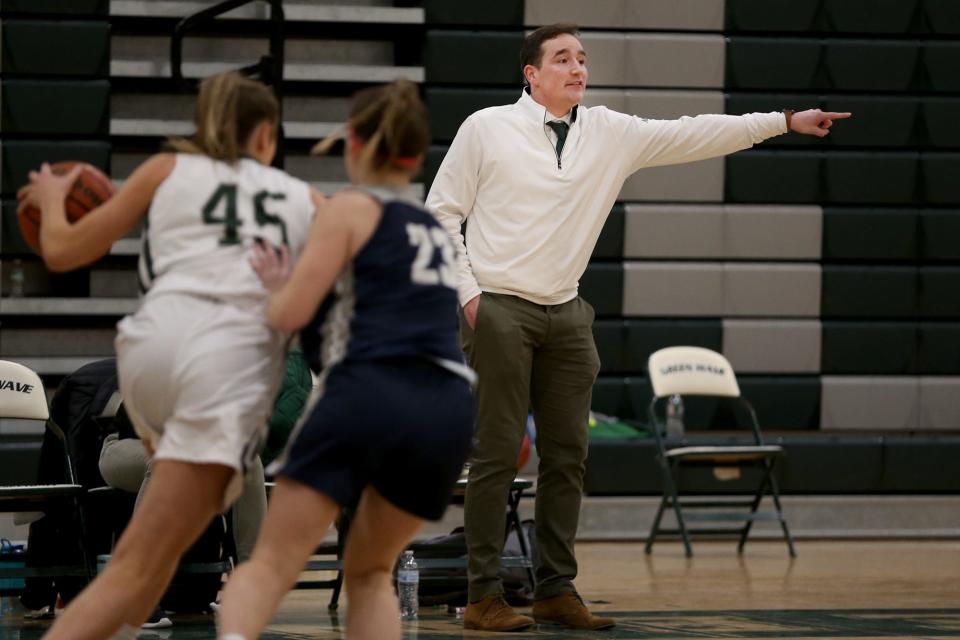
Portsmouth's Tim Hopley said coaches want to help prepare players "who have aspirations to play at the next level," and one way to make sure that happens is to play by rules closer to the college game, meaning a shot clock and a NCAA 3-point line."
Winnacunnet boys coach Jay McKenna said he's in favor of implementing a shot clock, and that it's needed, especially for kids looking to play in college.
"That's an integral part ... it's the modern game, and I'd love to see us take that step forward," McKenna said.
Newburyport AD weighs in on how it's going in Massachusetts
Massachusetts adopted the shot clock at the high school level prior to the 1998-1999 season, and Newburyport High School athletic director Kyle Hodsdon is a fan.
"It's really good for the game if you're a basketball purist," Hodsdon said. "There's organization most trips down the floor and teams typically have to set up some type of an offensive structure rather than just run up and down the floor or holding the ball for extended period of time."
More high school basketball:Meet 13 surprise standout boys players in Seacoast in 2022-23
Hodsdon said the biggest expense is not the cost of purchasing and the installation of the shot clock, it's paying someone $50 a game to run it for both the boys and girls programs at the varsity and junior varsity levels. With 20 home games for the boys and girls teams (varsity and JV for each), that's $2,000 a season.
"If you asked every athletic director in the Cape Ann League, we would all say the biggest struggle we have on game night is finding personnel, at least right now," Hodsdon said. "And the shot clock operator is very unique. A lot of times you can find somebody to run the scoreboard because it's just the time and score, but for a shot clock, you have to actually know some of the extended rules."
Maine Principals Association supports what schools want
Mike Bisson, assistant executive director of the Maine Principals Association, said while he does not attend the basketball meetings, the biggest pushback he has heard is schools have not "been real supportive of adding the initial expense of getting a shot clocks, and then finding someone to operate at games."
Maine has never had a shot clock, but Bisson said the state's basketball committee would more than likely be on board with whatever the schools want.
What are basketball officials saying?
Gary Petrin has been a referee for high schools, and a few community colleges in both Maine and New Hampshire. He has seen the advantages and disadvantages of the shot clock, and said he's mostly for it.
"I'd rather see it because it quickens the game and makes the game go faster as far as play," Petrin said. "Teams have to execute their offense a lot quicker, and defensively, teams have to be on their toes all the time because you have (30 to 35) seconds to shoot the ball."
Vote now:You can vote here for Seacoast high school Athletes of Week for Jan. 23-28
Petrin said having a shot clock doesn't make his job much different, other than the need to keep a constant eye on the clock.
"It resets at different times, like on a kicked ball, it'll reset," Petrin said. "You just have to be aware of the shot clock, so it's a little added responsibility for the officials, but it's nothing major and nothing we couldn't handle."
Kerry Whitten, a New Hampshire basketball official, said he has been told cost is the No. 1 reason there isn't a shot clock in the Granite State or in Maine.
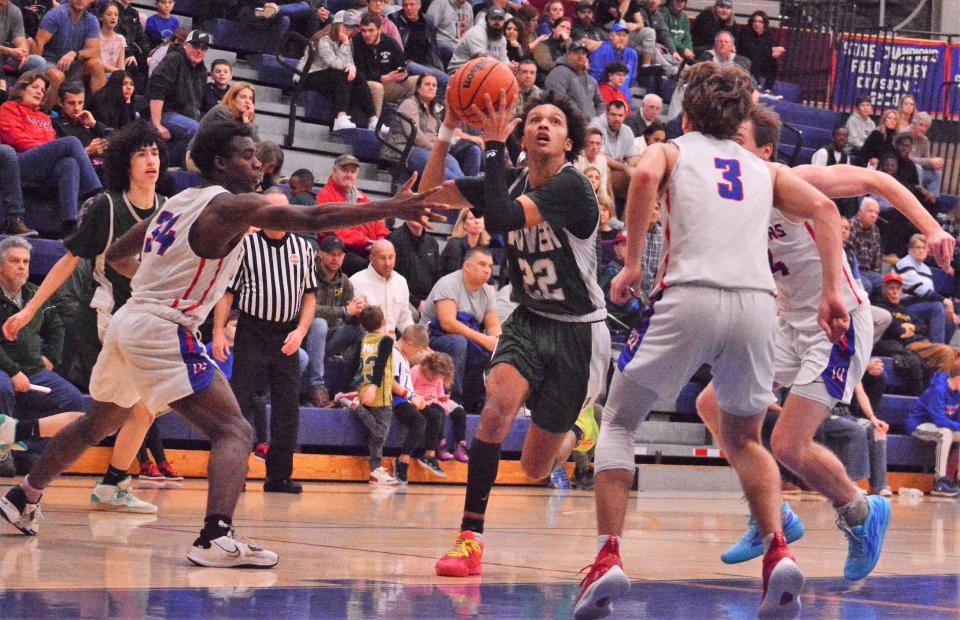
Whitten said the biggest benefit of a shot clock is that it would reward good defense.
"It also creates an up-tempo game where teams are taking better quality shots, the 12-foot and 15-foot shots, and not just relying on throwing the ball around and hoping to get the open 3-pointer," Whitten said.
What are coaches saying?
Let's say a team is holding onto a 4-point lead with 1 minute remaining in the fourth quarter. If there was a shot clock, the offense would be forced to attempt to get a bucket. Conversely, defenses can pull out full-court presses, traps, and whatever scheme best suits the team for 30 seconds to get a stop.
Without a shot clock, that's not the case.
"The way most teams play, we don't need one, but at some point, I would love to see it," St. Thomas athletic director and boys basketball coach Dave Morissette said. "Coaches would coach differently, and players would be less robotic and have to make plays on their own at the end of shot clocks. Players would become better."
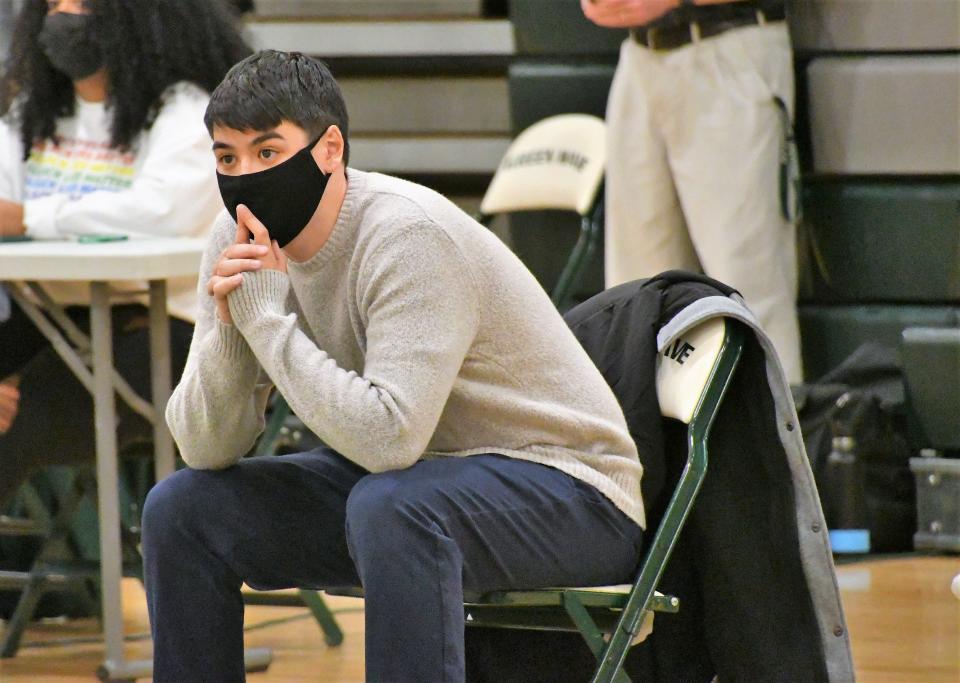
End-of-game scenarios is one of the main reasons Portsmouth boys coach John Mulvey is in support of a shot clock.
"Teams cannot stall when they're winning," Mulvey said. "(Teams) have to continue to keep playing and both teams will get more possessions. Down six to 10 points with 3 minutes to go, you can easily come back instead of having to start the foul game."
Dover girls coach Jimmy Flynn said growing up in Massachusetts, the shot clock was part of the game for him since middle school. He supports it because it forces players to think more and play at a faster pace.
He also had another take.
"From a coaching standpoint, it's a lot less stressful without a shot clock," Flynn said. "It would be an adjustment for everyone in both states, but I could see it bringing value and teams would adjust pretty quick."
College signings: 11 more Seacoast student-athletes choose their schools
St. Thomas Aquinas girls coach Kevin Giannino said a shot clock would definitely change the game from a coaching and playing perspective.
"Unfortunately, there probably would be more zone played, but the tradeoff would be a stronger emphasis on defense with exciting finishes, and not a parade to the foul line," Giannino said.
"I like the idea of teaching our players to defend for 35 seconds, or whatever time, knowing opponents have to force a tough shot at the end of the clock," Marshwood boys coach Bobby Pratt said.
Exeter boys coach Jeff Holmes said he wouldn't want anything shorter than 30 seconds, and a shot clock makes for a better game.
A pair of 1,000-point scorers, turned coaches weigh in
Oyster River High School girls head coach Randy Kinzly, who was a 1,000-point scorer in his playing days at Oyster River, likes the idea of having a shot clock.
"It makes the coaches coach more efficiently," he said. "Makes the defensive strategy different, and it makes time a component in the game. It also gives teams that fall behind a chance to gain ground."
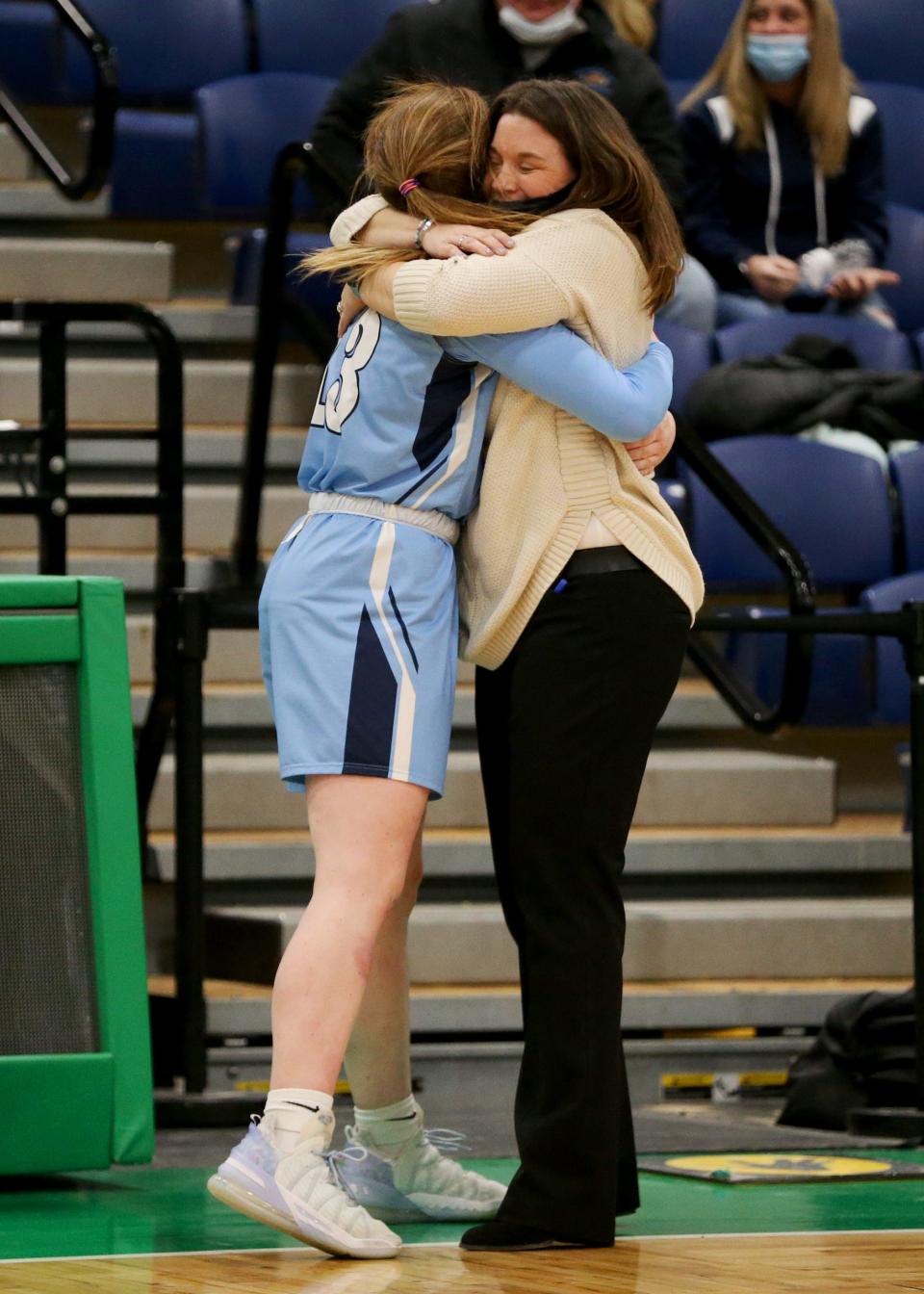
York High School girls coach Jess Stacy was a 1,000-point scorer in Massachusetts at Sharon High School, and played with a shot clock throughout her career. When she began coaching in Maine at Traip Academy, she said, it was strange not to see a shot clock.
"I love a fast-paced game, and I think implementing a shot clock would be beneficial in Maine," Stacy said, while also recognizing the challenges. "But, it's a far more fun game to watch for fans, and for kids who are looking to play at the next level; it prepares them for the use of a shot clock."
Dover coach suggests shot clock more appropriate for D1 and D2
Matt Fennessy, a seven-year head coach for the Green Wave, has been a proponent of a shot clock for a long time, and thinks the issue is magnified in the state tournaments, including at the University of New Hampshire where the championship game is played on a larger court.
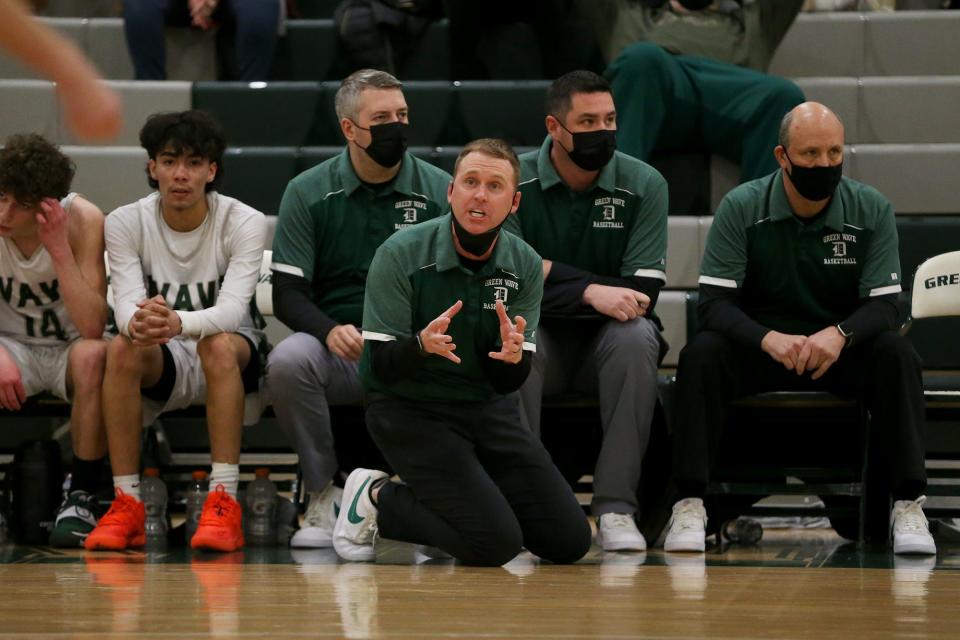
"For a long time, the (NFHS) didn't support it, but they reversed course on it a couple of years ago," Fennessy said. "I could see it in Division I and II, but I think it would harder for Division III and IV to pull off. I can't imagine the NHIAA allowing two divisions to do one thing and the others do another, that's not usually how they like to operate."
Pushback and concerns over shot clock
One of the concerns about not having a shot clock was public high schools were losing their "edge" to prep schools, according to WHS girls coach Marden.
For example, public high schools in Connecticut don't have a shot clock, while prep schools in the state have a 35-second clock.
"That is another 'edge' that those schools can sell to college prospects to encourage them to switch from playing for their local schools," Marden said.
Spaulding girls basketball coach Scott Blake thinks a shot clock would be beneficial to the players.
But, Blake said, with such a fast-paced game in New Hampshire basketball, shot clocks might not come into effect until the end of quarters "when teams hold for the last shots."
Making a case against shot clocks
Jerry Hill coached for 30 years in New Jersey prior to taking the York boys team in the 2020-21 season. Hill said there was no shot clock in New Jersey, and he likes the strategy involved in games without one.
"I have a ball-control kind of philosophy," Hill said. "So being able to control the ball at the end of a quarter or game is conducive to what we do."
'Grace and gratitude':Oyster River basketball Shoot-a-Thon helps Dover Children's Home
Marshwood girls coach Angie Littlefield doesn't think there is a need for a shot clock, especially with the state of Maine struggling with numbers.
"I think creating another restriction on the court could potentially only hinder further participation in the sport," Littlefield said.
NHIAA not in a hurry to use shot clock
Jeff Collins, the executive director at the New Hampshire Interscholastic Athletic Association, said there have been discussions on the organization's basketball committee about adding the shot clock since the NFHS approval in 2021.
"We've talked about the cost of implementation, whether it be the cost of the clock itself, the cost of running the clock, and who would run the clock," Collins said.
Collins was unsure about the price, but said it's definitely an "added expense."
"The way budgeting is, if implementation is something the committee would vote on, along with feedback from coaches across the state, that rollout would have to be a multi-year process because of the cost associated with bringing it on board," Collins said. "It's ongoing dialogue with the basketball committee here at the NHIAA."
This article originally appeared on Portsmouth Herald: Will NH, Maine high school basketball add shot clock? Coaches favor it

